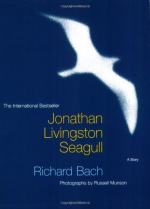|
This section contains 170 words (approx. 1 page at 400 words per page) |

|
Stories of flight (with its symbolism of escape, freedom, control, intelligence, and sexual fulfillment) date from long before the Greek myth of Icarus and Daedalus.
Two other popular allegories (Pilgrim's Progress, 1684, and the tradition of Everyman, fifteenth century) illustrate how allegorical reading can seem natural when it fits the education of the readership. Adult fairy tales such as St. Exupery's The Little Prince (1943) and Lewis Carroll's Alice's Adventures in Wonderland (1865) illustrate that the appeal of simple figures is not new.
Success books, from Franklin's autobiography, through Horatio Alger's boys' stories, to Dale Carnegie's How to Win Friends and Influence People (1936) and Norman Vincent Peale's The Power of Positive Thinking (1952) indicate that Jonathan's ambitions are widely reflected in the popular audience. Little books, such as The Little Prince, The Prophet (1923), and Love Story (1970), tend to use stereotypes and simple symbols in similar ways. Jane Roberts's Seth books...
|
This section contains 170 words (approx. 1 page at 400 words per page) |

|




